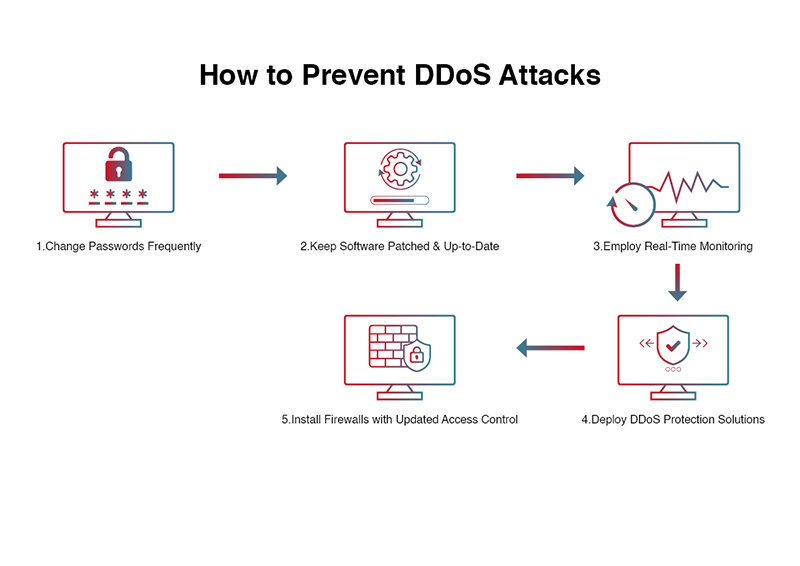How to Protect Against DDoS Attacks
DDoS (Distributed Denial of Service) attacks can be extremely harmful to websites, causing disruption to services, financial loss, and damage to brand reputation. It is essential for website owners and administrators to be proactive in protecting their online assets from such attacks. Here are some practical tips to help you safeguard your website against DDoS attacks:
1. Implement DDoS Protection Services
One of the most effective ways to protect your website against DDoS attacks is to enlist the help of a DDoS protection service. These services can detect and mitigate DDoS attacks in real-time, ensuring that your website remains online and operational even during an attack. DDoS protection services use advanced algorithms to analyze incoming traffic and filter out malicious traffic before it reaches your website.
2. Monitor Website Traffic Regularly
Regularly monitoring your website traffic can help you to detect any unusual spikes or patterns that may indicate a DDoS attack. By using website analytics tools, you can keep track of your website’s normal traffic patterns and set up alerts for any abnormal activity. This proactive approach can help you to take immediate action and mitigate the impact of a potential DDoS attack.
3. Use Web Application Firewalls (WAF)
Web Application Firewalls (WAF) can help to protect your website from various types of attacks, including DDoS attacks. WAFs analyze incoming traffic and filter out malicious requests before they reach your website’s server. By implementing a WAF, you can add an extra layer of security to your website and prevent DDoS attacks from causing any damage.
4. Configure Proper Network Security Measures
Ensuring that your network security measures are up to date and properly configured is essential for protecting your website against DDoS attacks. This includes using strong passwords, keeping your software and applications updated, and implementing encryption protocols. By following best practices for network security, you can reduce the risk of falling victim to a DDoS attack.
5. Plan and Practice DDoS Attack Response
Having a solid DDoS attack response plan in place is crucial for minimizing the impact of an attack on your website. Make sure to outline the steps to be taken in case of a DDoS attack, including who to contact, how to communicate with customers, and how to restore services. Regularly practicing your DDoS attack response plan can help you to react swiftly and effectively when an attack occurs.
6. Invest in Scalable Hosting Solutions
Choosing a hosting provider that offers scalable solutions can help to protect your website against DDoS attacks. Scalable hosting solutions can handle sudden increases in traffic and easily mitigate the impact of a DDoS attack. By investing in a hosting provider that offers DDoS protection and scalable solutions, you can ensure that your website remains secure and operational at all times.
Conclusion
Protecting your website against DDoS attacks requires a proactive approach and the implementation of various security measures. By enlisting the help of DDoS protection services, monitoring website traffic, using WAFs, configuring proper network security measures, planning DDoS attack responses, and investing in scalable hosting solutions, you can safeguard your online assets from potential attacks. Stay vigilant and prepared to ensure the continued availability and integrity of your website.
